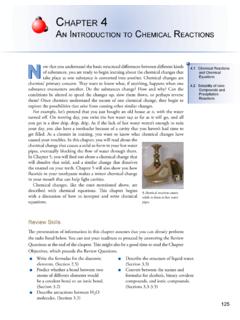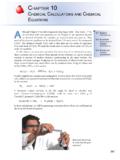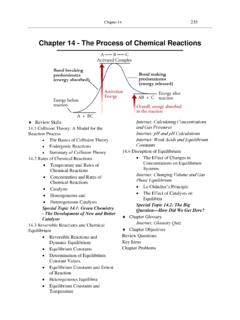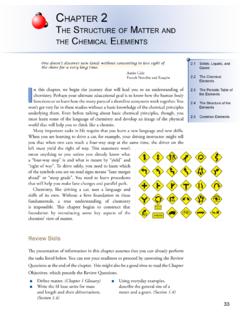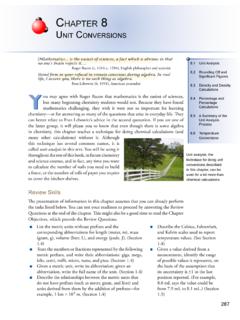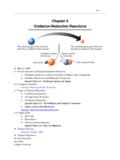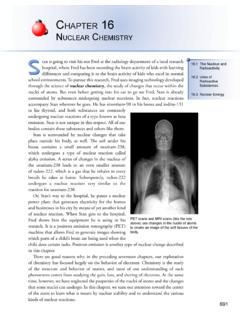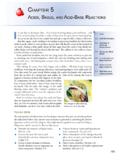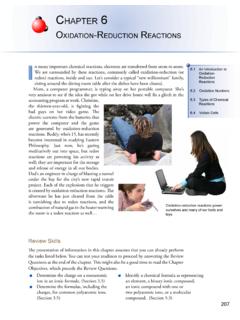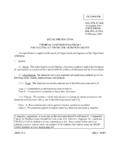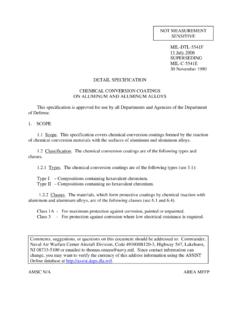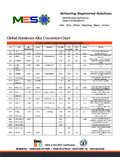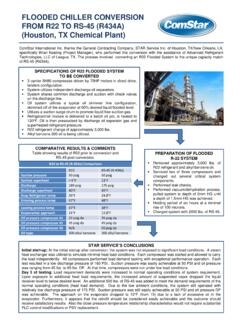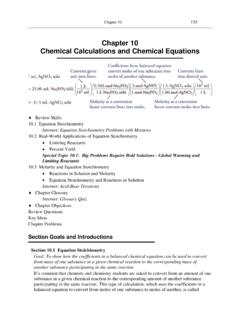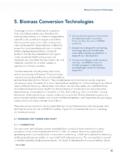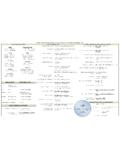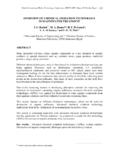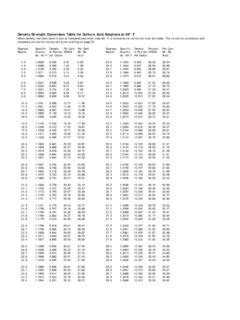Transcription of Chapter 9 Chemical Calculations and Chemical Formulas
1 117. Chapter 9. Chemical Calculations and Chemical Formulas Review Skills A Typical Problem Relating Mass to Number of Particles Atomic Mass and Counting Atoms by Weighing Molar Mass Molar Mass and Chemical Compounds Molecular Mass and Molar Mass of Molecular Compounds Ionic Compounds, Formula Units, and Formula Mass Internet: Molar Mass Conversion Factors Relationships Between Masses of Elements and Compounds Internet: Percentage of an Element in a Compound Determination of Empirical and Molecular Formulas Determining Empirical Formulas Converting Empirical Formulas Into Molecular Formulas Special Topic : Green Chemistry - Making Chemicals from Safer Reactants Internet: Combustion Analysis Special Topic : Safe and Effective?
2 Chapter Glossary Internet: Glossary Quiz Chapter Objectives Review Questions Key Ideas Chapter Problems Section Goals and Introductions Section A Typical Problem Goal: To introduce the Chapter by describing a typical problem that you will be able to work after studying the Chapter . Sometimes a task becomes much easier if you know from the beginning where you are going to end up. It will help you to understand the importance of Sections and if you first know how the Calculations described there can be used.
3 This section shows a typical problem and gives you a sense of why it is important. 118 Study Guide for An Introduction to Chemistry Section Relating Mass to Number of Particles Goals To show how to do a procedure called counting by weighing. To introduce atomic mass and show how it can be used to convert between the mass of a sample of an element and the number of atoms that the sample contains. Even a tiny sample of an element contains a huge number of atoms. There's no way that you could ever count that high, even if you were able to count atoms one at a time (which you can't).
4 So if you want to know the number of atoms in a sample of an element, you have to do it by an indirect technique called counting by weighing. This section introduces this technique and shows how it can be applied to the conversions between mass of a sample of an element and the number of atoms in the sample. An important unit called the mole is introduced in this section. It is very important that you understand what it is and how it is used. Section Molar Mass and Chemical Compounds Goal: To introduce molecular mass and formula mass and show how they can be used to convert between the mass of a sample of a compound and the number of molecules or formula units that the sample contains.
5 This section shows how to calculate the number of molecules (expressed in moles) in a sample of a molecular compound from the mass of that sample and how to calculate the mass in a sample of a molecular compound from the moles of molecules it contains. The section also explains why ionic compounds do not contain molecules and how the term formula unit can be used to describe the units of ionic compounds that are like molecules of molecular compounds. Then you will see how to calculate the number of formula units in a sample of an ionic compound (expressed in moles) from the mass of that sample and how to calculate the mass of an ionic compound and the moles of formula units it contains.
6 These Calculations are very commonly done by chemists and chemistry students, so be sure you can do them quickly and correctly. Internet: Molar Mass Conversion Factors Section Relationships Between Masses of Elements and Compounds Goal: To show how you convert between mass of an element and mass of a compound that contains the element. This section shows how you can use the skills you learned in Section and and some information derived from Chemical Formulas for compounds to convert between mass of an element and mass of a compound that contains the element.
7 The section on our Web site called Percentage of an Element in a Compound describes Calculations that are related to this section. Internet: Percentage of an Element in a Compound Section Determination of Empirical and Molecular Formulas Goal: To describe what empirical and molecular Formulas are and how they can be determined. All compounds can be described with empirical Formulas , and molecular compounds can also be described with molecular Formulas . This section describes the information given by each type of formula and shows ways to determine them.
8 A section on our Web site describes an experimental technique used to determine empirical Formulas . Internet: Combustion Analysis Chapter 9 Chemical Calculations and Chemical Formulas 119. Chapter 9 Map Chapter Checklist Read the Review Skills section. If there is any skill mentioned that you have not yet mastered, review the material on that topic before reading this Chapter . Read the Chapter quickly before the lecture that describes it. Attend class meetings, take notes, and participate in class discussions.
9 Work the Chapter Exercises, perhaps using the Chapter Examples as guides. Study the Chapter Glossary and test yourself on our Web site: Internet: Glossary Quiz Study all of the Chapter Objectives. You might want to write a description of how you will meet each objective. (Although it is best to master all of the objectives, the following objectives are especially important because they pertain to skills that you will need while studying other chapters of this text: 4, 5, 7, 10, and 12.). 120 Study Guide for An Introduction to Chemistry Reread the Study Sheets in this Chapter and decide whether you will use them or some variation on them to complete the tasks they describe.
10 Sample Study Sheet : Converting Between Mass of Element and Mass of Compound Containing the Element Sample Study Sheet : Calculating Empirical Formulas Sample Study Sheet : Calculating Molecular Formulas To get a review of the most important topics in the Chapter , fill in the blanks in the Key Ideas section. Work all of the selected problems at the end of the Chapter , and check your answers with the solutions provided in this Chapter of the study guide. Ask for help if you need it. Web Resources Internet: Molar Mass Conversion Factors Internet: Percentage of an Element in a Compound Internet: Combustion Analysis Internet: Glossary Quiz Exercises Key Exercise - Atomic Mass Calculations : Gold is often sold in units of troy ounces.
